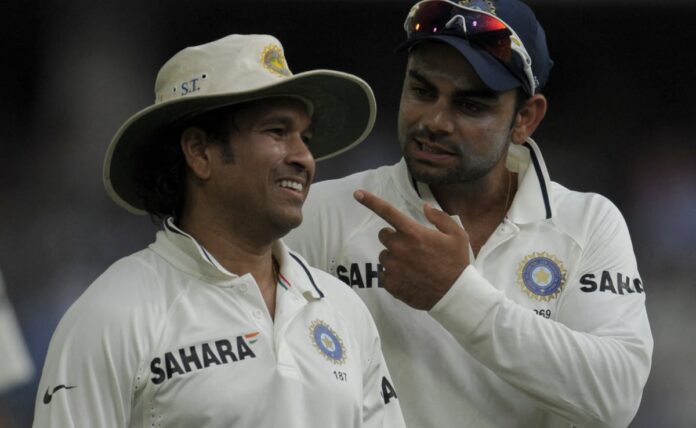The gruelling Test tour of South Africa had finished in early January of 2007 and towards the end of that month, India were playing West Indies in a bilateral ODI series as a tune-up to the 50-over World Cup set to be played in the Caribbean in a month and a half’s time. India played four ODIs on January 21, 24, 27 and 31 at Nagpur, Chennai, Cuttack and Vadodara. On February 1, four members of that team — Sachin Tendulkar, Zaheer Khan, Ajit Agarkar and Sourav Ganguly were all taking a flight from Vadodara to Mumbai.
Reason? Mumbai was playing Ranji Trophy final against Bengal from February 2-6 and none of them wanted to miss the prestige battle. Tendulkar scored a hundred, Ganguly scored 90 and Zaheer took a bagful of wickets.
Within 48 hours of that Ranji Trophy final, Tendulkar, Ganguly, and Zaheer had to play an ODI international series against Sri Lanka. “Workload management” was yet to become a talking point at that time.
The Indian team that was blanked 0-3 by New Zealand at home on Sunday had seniors who were exempted from playing Duleep Trophy despite having a decent break after the the T20 World Cup with only a three-match ODI series against Sri Lanka in the interim.
Save Jasprit Bumrah, whose injury-prone body and exceptional skills demand workload management, questions are noe being raised as to why the likes of Virat Kohli, Rohit Sharma, R Ashwin and Ravindra Jadeja opted out of Duleep Trophy.
“In gruelling heat of second week of April, in the year 2000, he played Ranji Trophy semi-final for Mumbai against Tamil Nadu and scored a double hundred in a first innings chase of nearly 500,” former India opener Devang Gandhi, who had been a national selector between 2017 to 2021, recalled while talking to PTI.
“In another three days, he was playing the Ranji final against Hyderabad team which had Mohammed Azharuddin and VVS Laxman and scored a fifty and a hundred. Tendulkar played Ranji semi-final and final in a space of two weeks in April after playing ODIs till end of March,” added the former player.
For the record, the last Ranji Trophy game that Kohli played was in Ghaziabad against Uttar Pradesh in 2012, a match that also featured Virender Sehwag, Gautam Gambhir, Ashish Nehra, Ishant Sharma, Suresh Raina, Mohammed Kaif and Bhuvneshwar Kumar. Perhaps one of the last star-studded games ever played in Ranji Trophy.
Rohit’s last Ranji Trophy match for Mumbai was in 2015.
After that, both have played one first-class game each — Kohli for India A before a tour of Sri Lanka (2017) and Rohit for India A before a home series against South Africa (2019) when he was set to open in Tests.
Tendulkar played 310 first-class games including his 200 Tests. So, the maestro played 110 first-class matches, including tour games, in 24 years despite his hectic international schedule.
In comparison, Kohli has played 32 first-class games and Rohit fairs a shade better with 61 matches in 18 years of first-class cricket since 2006.
But to be fair, the Tendulkars, Laxmans, Dravids and Gangulys, in their prime, didn’t have two months of IPL and T20 Internationals engagements which the current generation plays. Rohit has played 448 career T20 games while Kohli is one short of 400.
“Obviously workload is important and so is rest,” Gandhi said.
“But for batters, if you realise that you are not in best of form, you have to take recourse to domestic cricket. I believe one Duleep Trophy game could have been played,” Gandhi reasoned.
In contrast, Former chairman of selectors MSK Prasad believes it is unfair to compare the two eras given the amount of cricket being played now.
“It is unlike Kapil paaji and Sunny sir’s days, volume of cricket has increased exponentially. It takes a lot out of cricketers,” Prasad said.
“I think, the one-off Irani Cup match is where the BCCI can make it mandatory for stars to show up for the Rest of India team but they have to slot it at a time which is not overlapping with a Test series,” he suggested.
Prasad also felt that there should be a structured rotation policy in place to manage workloads, something that the committee led by him introduced between 2017 and 2021.
“I do not know why the rotation system started by us to ensure breaks for players has been done away with, you did not need all the stars to play against Bangladesh,” he said.
The BCCI had emphasised on the need for big players to show up for domestic engagements a few months ago but at the same time, the Board allowed them to skip Duleep Trophy, which took place before the two-Test rubber against Bangladesh.
“Champion players are very self aware individuals. (But) Sometimes a nudge is required to help them. Having said this, the expectation needs to be set from the right stakeholders at the very start to avoid awkward situations,” said another former selector Jatin Paranjpe, putting the onus on the Board.
Possibly the way forward for the Board board will be to make it mandatory for the Indian team members (unless someone is injured) to play at least one or two domestic games before a major Test series.
The ‘India Cricket’ season which runs from October to March will always have Ranji Trophy overlapping with some home Test series unless the team travels to Australia, New Zealand or South Africa during the same period.
“A good way is to schedule a home Test series in such a manner that at least one or two Ranji rounds precede it instead of running parallelly, which has been the case all this while,” Prasad said.
Topics mentioned in this article

